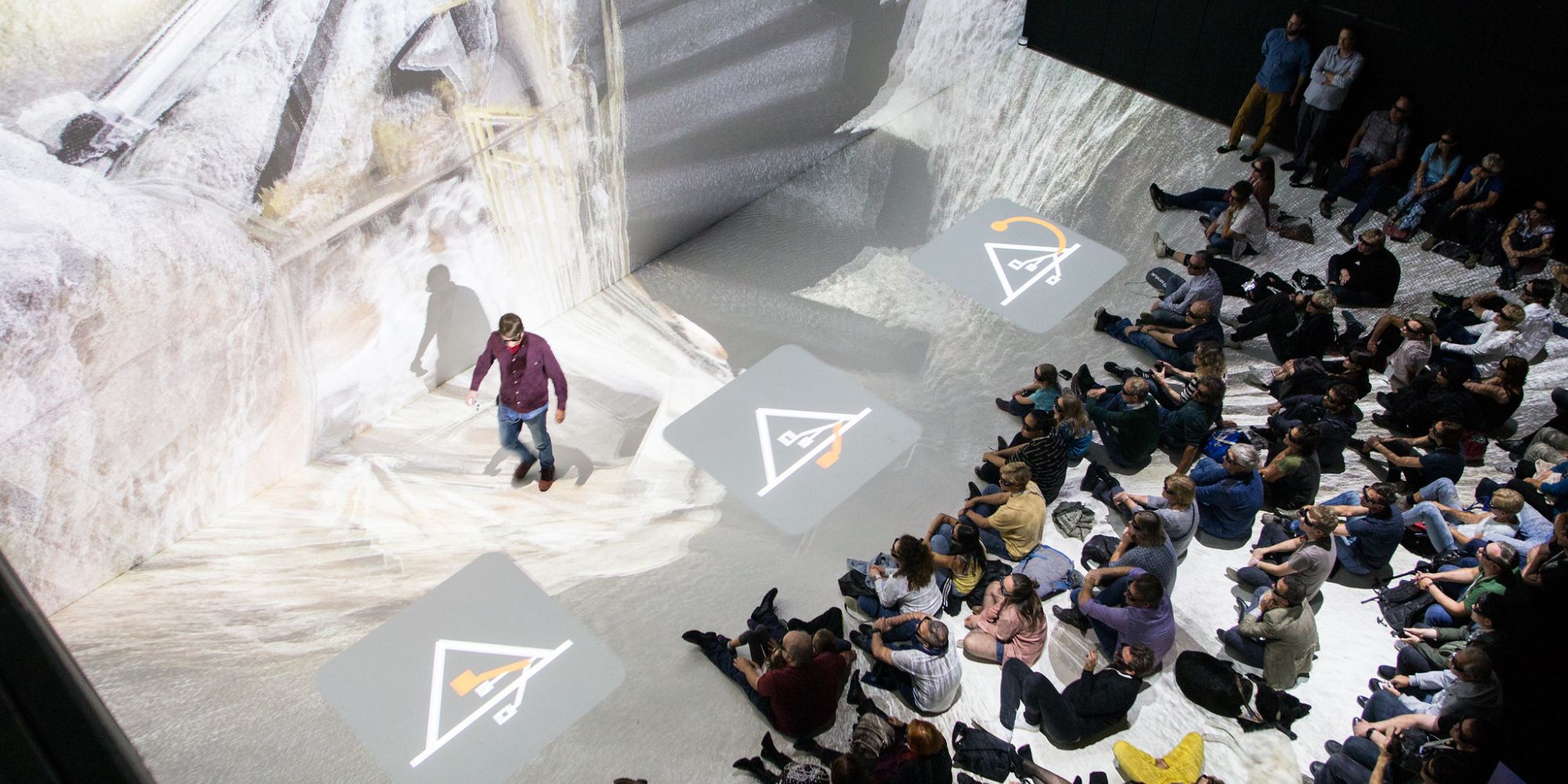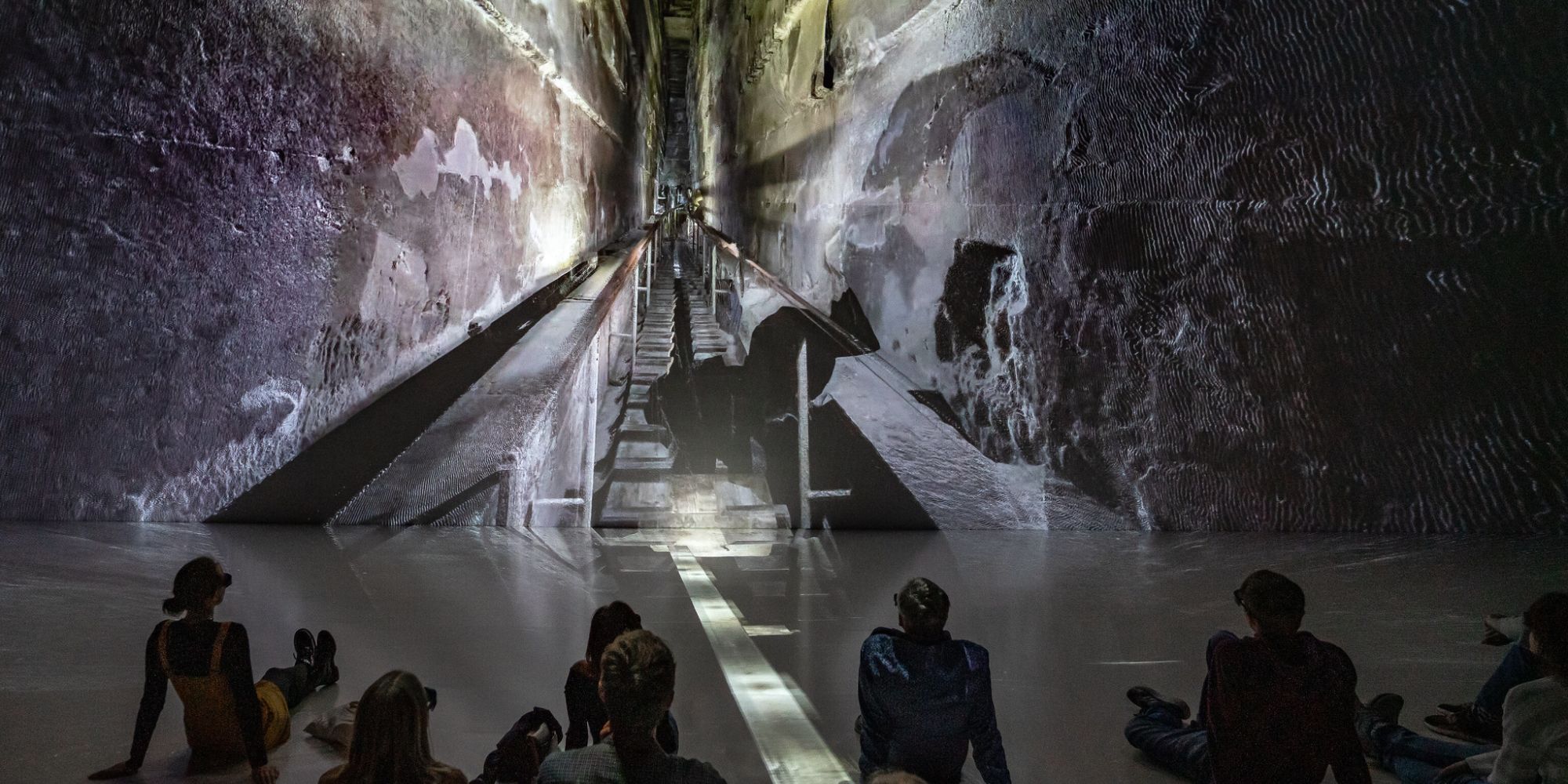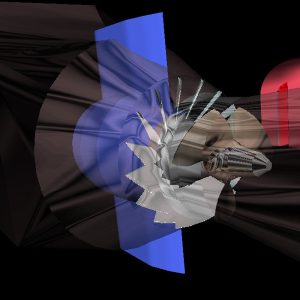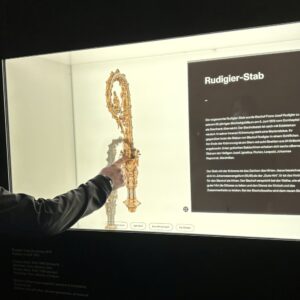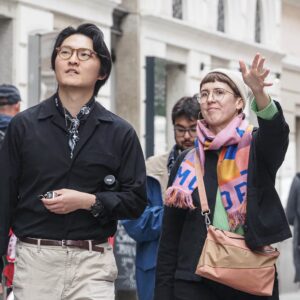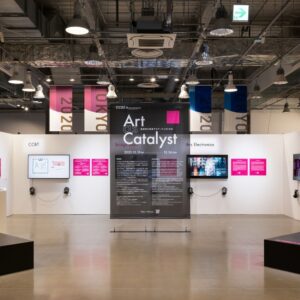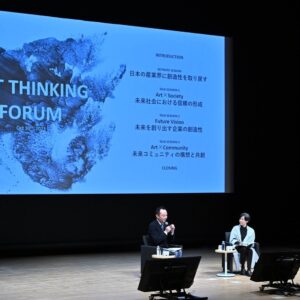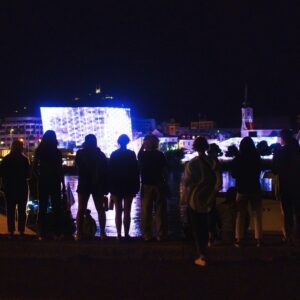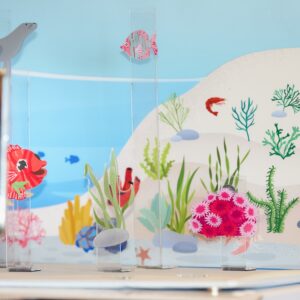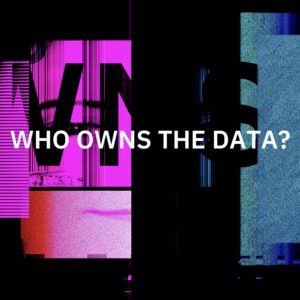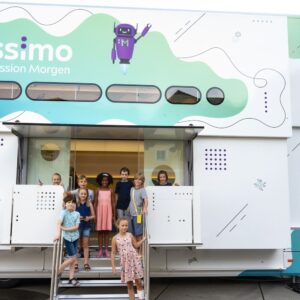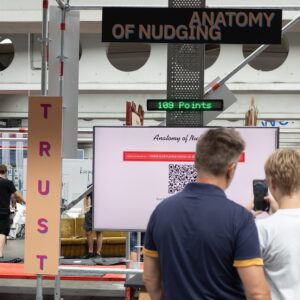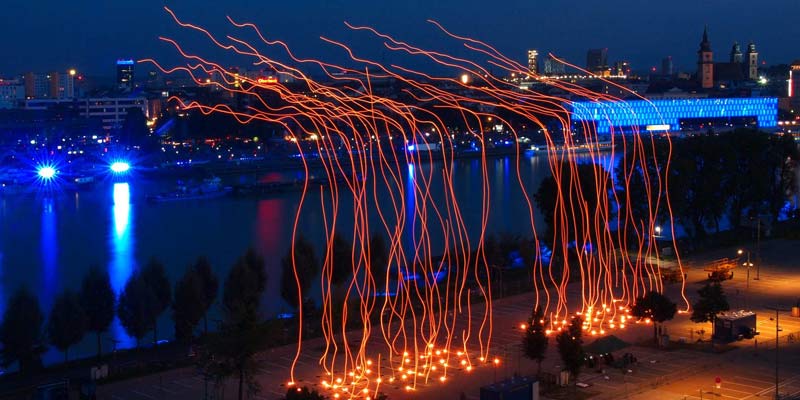The Great Pyramid in 3D, From the BBC Series Ancient Invisible Cities is an interactive immersive experience exploring the possibilities of virtual archaeology by scanning and digitally rebuilding historical architecture. With this program, visitors of the Ars Electronica Center’s Deep Space 8K can virtually go deep inside the oldest wonder of the ancient world, the Great Pyramid of Giza. They are able to move interactively through the 360° 3D environment with 12K resolution, with spatial audio and original soundtracks as well as expert commentary.
The Deep Space 8K application was developed as part of the EU-funded research project Immersify by the Ars Electronica Futurelab, based on the work by BBC Studios and ScanLAB Projects, initially produced as a TV documentary. The lab reauthored the contents by creating a Unity 3D application for users to move interactively in three-dimensional space and freely control their field of view. The single video frames had therefore been recreated by ScanLAb in incredibly high 12K resolution per eye.
The main challenges were introducing interactive elements into the storytelling as well as performance optimizations with the interactive distributed stereoscopic projection on wall and floor. Different encoding parameters were used for an optimal encoding procedure for point cloud and especially this content. The project utilizes a high performance H265 codec developed by Spin Digital. For storytelling the biggest question was how to present the content to the user, creating a complete interactive story out of the different parts of the video.
The outcome is a unique experience: The tour in Deep Space 8K lets users explore the interior and exterior of the Great Pyramid of Giza like never before. There are three possible starting points like ascending passages to the Grand Gallery, leading straight to the King’s Chamber, or going underground to visit the subterranean chamber, passing tunnels roughly hacked by tomb raiders thousands of years ago. Thanks to the 3D models, users can even cross through the mass of the pyramid itself, exploring the structures in a completely new way – entering debates that excite archaeologists to this day.
During the Horizion 2020 project Immersify from 2017 to 2020, several EU partners including the Ars Electronica Futurelab were dedicated to developing new forms of media for highly immersive environments such as the Deep Space 8K, using various techniques and developing tools for processing the amounts of data necessary.
Credits
Ars Electronica Futurelab: Roland Haring, Anna Kuthan, Ali Nikrang, Johannes Pöll, Clemens F. Scharfen
PARTNERS: BBC Studios, ScanLAB Projects, Spin Digital
The Immersify project has received funding from the European Union’s Horizon 2020 research and innovation programme under grant agreement No 762079.
Related Projects
Immerse yourself in our work
Interested in similar projects? The following Ars Electronica Futurelab projects are related to the ideas and concepts presented here. An overview of all our productions, cooperations and projects can be found in our project archive.


